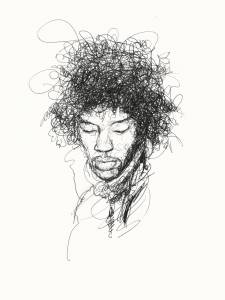
The latest 52 Weeks Project experiment is a return to the ballpoint pen, and single line counter drawing.
From Erik Rose (via FB)
How did you go about switching styles as an already established artist? Specifically ink to pencil. Did you have to re-market yourself or were existing clients willing to hire you for the new style?
I’ll be honest and confess I don’t actually think much about style as a conscious thing at all. It’s just the way I draw and paint. So the choice isn’t really a choice I suppose. That said in terms of medium, I don’t know. I tend to let the desire or interest lead the way wherever possible. It just makes for better work when it’s fueled by interest. And any transition from one to the other doesn’t come down like a steel door, but gradually… I moved into sumi ink after a two page section/experiment in my graphic novel, SUDDEN GRAVITY, having no real idea where it would lead, and in the end it lead to a decade of work ranging from book covers, comics and children’s picture books derived from that experiment. After that time I began to feel like the medium had been more or less tackled and figured out insofar as my own meager talents could address and through a pair of 52 Weeks Projects using the various portraits of Doctor Who and Twin Peaks, I started playing around with graphite more earnestly. But neither switch over happened immediately… both sort of took over the course of a year or more before trains were fully switched, and I do get asked to do a sumi piece here and there still despite most of the work these days being executed in graphite.
I think by posting and social-media sharing the publicity of those experiments led art directors and editors to be able to call forward a particular approach that suited a project they needed an artist for in a way that was safer than just letting me experiment on their dime. Also forums that lent themselvesves to different approaches as a value, such as work for Tor.com, or book covers with long familiar ADs invited approaches that allowed me to lead with my interest. This way, the idea of needing to remarket one’s self never really came to be a thing that needed doing on its own, but happened naturally.
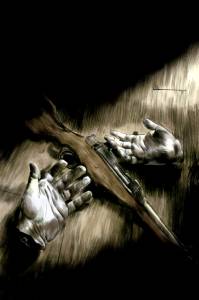
Called the most disturbing metaphor for neutering ever, this cover for Freaks of the Heartland #2 remains one of the darkest metaphorical/literal images to date.
From @DHMatt90 (via twitter)
Your art is very metaphorical, symbolic. How do you usually approach that visual metaphor on a new piece? Do you always have a clear idea of the message you want to relay, or that comes by studying the subject, doing thumbnails?
It ranges piece to piece generally. My general ethic going into a project brought home, rather than one I self generate, is upon reading the brief or the manuscript, or the film itself, is getting the flash of ideas the source material generates… or not. The first step of any sketching process is this, really. The metaphor and symbolism tends to be reflexive from me more than considered. But familiar enough as an approach that it’s not unconscious at all, but fully leashed and practical in how they are applied to the assignment.
Depending on the subject there are typically four ways this gets going:
1). I have absolutely no idea where to go and claw after any ideas the source material lends itself to.
2). I am familiar enough going in with the subject that I have that notion to lay anchor to, and then build out from there.
3). I have a flurry of ideas well beyond the need to the project and I have to then pare down, edit and choose. Sometimes, a bit before submitting choices, other times letting the AD make the first run.
4). The project comes with a pre-established brief that includes past work that made the AD think of me for the project.
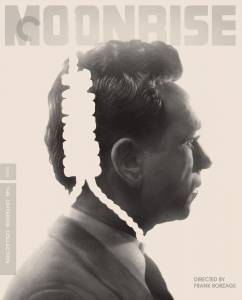
My cover piece for Criterion’s MOONRISE release was done so swiftly in such little time that I to this day feel weird to see it win awards and be lauded over work that next to it took days and hours of time. In the end the result is what matters, but still… I confess to feeling funny about it being so swift.
From spikeydoodler (via Instagram)
Tools used and hours per piece???
I like graphite pencils, paper, sumi ink and washes, watercolor, color pencil and gouache, and the computer. I don’t much care for the experience of actually drawing digitally so I tend to use the medium as a paste up arena or a finishing tool, and sometimes to sort out and apply the colors. I like simple basic methods for making work, inexpensive as a result of poor post-art school non budgets probably had a lot to do with it, also the personal neurosis of the mental spiraling from the pressure when the materials are too precious.
As for time, well that ranges too. Thanks to comics, I’m habituated to be pretty quick, but my bumblebee brain likes to hop around anyway, so that’s a factor. The level of complexity for a piece, scale and scope and practical difficult can make a thing come together in a day or sometimes it can take weeks. A lot of folks erroneously value a piece based on how long it took to achieve. I don’t ascribe to that at all. Art isn’t like a cab ride: the value isn’t in how long it takes to do. And every piece no matter how swift or slow, is really built on the shoulders of the last one I did, so it’s a bit arbitrary to put a clock on a particular thing. When asked how long a piece takes to do I tend to include the back dated response of “twenty years a day or two”. Which I know is a snarky dodgem but it does truthfully speak to this reality.
I’ll be honest… I don’t love this question generally speaking. I find it inherently reductive and taking it as a value is a mistake. This isn’t a cab ride, or a race track run, or time to make a sandwich at a deli. Whether a piece takes a month or a day to execute doesn’t have much to do with the value of the piece. Yes, time matters if you’re on a deadline, but isn’t relevant to anyone else other than the artist and the editor. I don’t think it’s even informative or valuable to other artists to hear how fast or slow another artist is in how they execute their work either. No one cares how long it took the train to get to the station where you are, just to where you’re going once you board it. My answer truthfully is always… it depends and it varies each and every time.

Getting to work with Prince and the excessively talented Keisha Castle Hughes on his Cinnamon Girl music video was one of those life goals. I mean come on, right? But then you do it, and you move on and make yourself ready for the next one.
From devic.a (via Instagram)
One thing I wonder about all of you accomplished artists, do you still feel like there is some goal that is impossible to reach, like exhibiting in a specific gallery, doing a certain project? Or do you feel like you would be pleased with your career if this was the highest point? Can artists ever feel at rest with their work?
I think we all have those goals and certainly I have, and the real ultimate goal that’s come forward after all these years for me especially is to be prepared to set new goals over and over again. Things change, priorities alter and the goals set forward when you’re starting out do shift as you move on. When I first got going having a Vertigo book written and drawn by me was the main goal. I managed for a time to hit that mark before the project was killed in house, but in retrospect that matters a good deal less now than I thought it might back in say, the 1990’s when that was such a mountaintop for me. I’ve hit so many full measures I can’t begin to catalogue them and I feel gratefully blessed to have done so whether it’s work alongside heroes that got me into this business, tackle iconic subjects for Criterion or writers I’ve always admired and grew up reading… it’s been amazing and all have simply meant, like hankering after a forthcoming dinner, that once achieved the next meal becomes the new goal. There isn’t a mountaintop’s achievement that doesn’t beg after finding a higher one later in our thing. We work until we can’t anymore and that is the final and ultimate goal. If chasing particular benchmarks along the way help with that arc, then I’m all for it.
I do warn against certain benchmarks as qualifiers for success or career legitimizers overall though. It’s fine to set a goal but to enslave yourself to hitting that goal at the expense of all is not a healthy enterprise and I’ve come to find, diverts you further from being able to achieve that particular victory. You set a broad sight and then put your nose down and work. The goals will come or not, but under that mode will come more likely and more marvelously if you don’t try to white knuckle case after them specifically.
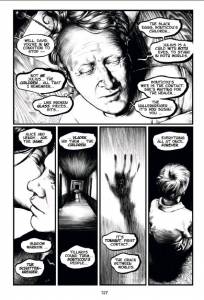
A page from SUDDEN GRAVITY executed way back in 1993. I remember distinctly that this day involved me installing two toilets and fixing a light switch before coming home to draw this page, completely unpaid, for Caliber Comics. And being delightfully glad for the life I was living then.
From Horatio Corpin III (via FB)
What made you pursue this career? Were you a full-time artist from the start or did you have a second job to pay the bills? And how was it starting out?
I drew for most of my life and arted in many different ways growing up whether I knew this was a thing or not. Where I grew up there wasn’t a lot of examples of being able to live as an artist nor pursue a career as one. It just wasn’t something that was encouraged much or fed beyond my own personal inclination to do so. I don’t think it was until High School that I even imagined that it could be a career possibility, and even then I graduated out on an architecture scholarship to NYC as a safer bet… which I quickly learned was A. not that at all, and B, not want I wanted to do at all. After Pratt I worked as an artists assistant for several NY painters and gallery people, and then began to make a living biking around Brooklyn with my tool-filled backpack fixing up apartments and building shelves, etc for folk. I pretty much laid sheetrock by day and wrote and drew Sudden Gravity, my first graphic novel, at night. It wasn’t until I left being a caretaker for an old mansion in Park Slope and headed north to Western Mass with my wife and newborn son, that I put all my eggs into the art basket and drew Freaks of the Heartland as my full-time job. Have luckily managed to pull off this particular hat trick since then. Fingers crossed it keeps up! I’m utterly useless for anything else at this point.
From tooadorable (via Instagram)
Who is Judy?
The first rule of Judy is….
From Alexander Sison (via FB)
What was the process like for doing the illustrations to Guys Read: Other Worlds? Did you have to consult some of the authors of the stories in that anthology, for example?
It varied a bit for each story. Ultimately my editor, the terrific Jordan Brown, acted as a funnel and gateway between myself and the various authors. So any news or details changes approvals or rejections usually came through him. But because we were dealing with individual authors, the shape and form and responses changed a lot between each particular story I was drawing for. But all the authors were keyed in for sure. The actual process was fairly normal- I’d come up with concept thumbnails and then submit those, multiples if there were multiple attacks, and we’d get notes… move on to final submit tweak if tweaks were asked for and then done.
Below here are samples of the thumbnails that went into the story BOUNCING the GRINNING GOAT by Shannon Hale that elucidate some of the movement that can happen between thumbnails and the final. I can’t recall all the details behind this save for a desire by the author to see our heroin’s face, but having her face us and putting the charging bull behind her didn’t strike the right tone. I offered a solve that we went through wherein in the final she’s braced behind a wall waiting for the charging creature to come by to ambush it with he broadsword.
Another reason behind the change as well was something Jordan and I had to contend with on our own… which was reconciling the art with the other art in the book as a whole piece. Each author pretty much only concerned themselves to their respective stories, but we were making a total book and so sometimes a piece was changed because it invoked a composition that might have been redundant to another, or used a similar trick… and the authors were so stove-piped they really weren’t in a position to concern themselves with this stuff. My overall sense at the end was that everyone was pretty pleased with all of it and we had very few bumps and asks along the way. Smooth as an ideal goal but not usual. Sometimes these things, anthologies in particular can be really contentious and varied, but I found this to be essentially fairly straight forward and simple going through.

Personal soundtracks aside my latest little warm up exercise has blossomed into a thing unto itself: RECURSIVE- ballpoint pen sketches done in a single unbroken line, all done in less than a few minutes has been a terrific energizing way to kick the studio into action.
From Opheliapayne (via Instagram)
What is one of your favourite exercises (or warm up, if you will) that help make you a better artist?
I have two that I’ve instituted for myself that have made the world of difference for my work. One is THE 52 WEEKS PROJECT, my ongoing self-assigned drawing project that has led to more benefits and work related projects than I could have ever imagined.
The Second one is my habit of making a musical soundtrack to a given large project. The soundtrack really is just a long playlist of music I like to have on while I’m working. I work at home and while happily isolated in my outbuilding attic, there are distractions that it can help stave off. More essentially are the multiple projects I always work on simultaneously, and sometimes it’s tricky to switch back and forth between them without some obvious bleed through from one to the other. Having a devoted set of playable music can really help put my brain in the right place for a particular project, and often when driving back in the early morning from taking my youngest boy to school, can help get me in shape for the coming day’s work. I’ve noticed that when I do this, I come in hot to the studio and can get right to it without any other need to warm up. I’ve found this particular essential for my graphic novels, which are usually years-long events peppered with other stuff for different clients throughout.
The latest exercise has been my new and still inits infancy series of my ongoing 52 Weeks Project, that I’m call RECURSIVE. Essentially just a bunch of supremely fast warm up sketches made to get the juices flowing.
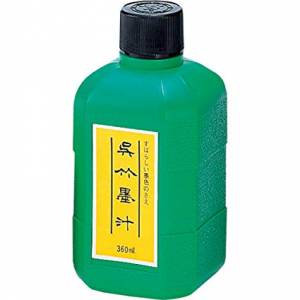
This stuff is the sugar for all my sumi work. It’s astonishingly rich dark and smooth, does dry brush like a magician and when dried is almost impossible to smear or reliquary so you can paint right over it without any bleeding. What ink at its best form is and should be.
From bizbev (via Instagram)
Inking tools?! Do you have a favorite brushpen? Process of working from photographs, but making your work so very your own?
I don’t really care much for the brush pens myself. I’ve tried a few and have a few but haven’t much enjoyed them as I do the liquified bottled sumi ink and brush approach. It’s less portable and certainly more messy, but when it comes to ink, I like a nice thick committed ink, and those pens tend to be a little washy for my tastes.
Ultimately in the end, nice tools and materials can help make elegantly presented work, but I don’t think it’s at all essential for making good work. If you can’t make a decent drawing with a crayon, a six hundred dollar tube of oil paint or a two thousand dollar cintiq won’t save you. In the end you have to be the best tool of your work, the materials after that are more or less incidental.
As for the photography thing, that’s a whole other discussion so deep and vast I’ll craft a separate article for it. But in short, working from a photo can help a great deal of course and obviously, but it also carries with it an equal measure of traps and trouble if you’re not careful. You kind of need to ignore the photo as much as you utilize it simultaneously, and that’s no mean feat. Otherwise it looks like a dead echo of the picture it came from rather than a living piece of art it should be.
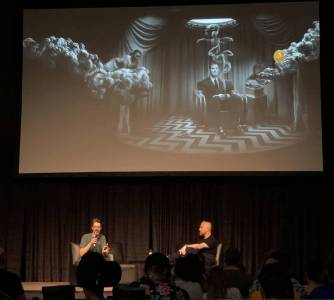
Me at the recent MONDOCON 5 chit chatting about all things Twin Peaks. These shows are where a lot of us meet and interact and through them we get a lot of our work and professional contacts.
From Iiamdavinci (via Instagram)
My question is how would one break into the art career (illustration) without not knowing anybody in the industry or not having any connections (not sure where you’re from but I’d also like to ask how to break into the art industry if you live in a country with extremely few opportunities) thank you so much
My first suggestion is to work your ass off. And nowadays, do it publicly. Social media is a place of great benefit in this regard in terms of being seen, shared and noticed by others- in particular, art directors, editors, writers and the like. There’s a universality to the medium on social media that’s hard to find anywhere else. If you find you’re trapped far away from being able to build relationships by visiting cons and shows and set up meetings, then social media is important as an alternate source of power and exposure. But for god’s sake please don’t just use an Instagram account or yours Facebook page in lieu of a website. It’s not so much that current art directors and ADs are old curmudgeons, but that it broadcasts a lack of professional seriousness if you’re also not investing the time and resources into building a simple and navigable website of your work to act as a portfolio. Period. The social media stuff should all point back to this as a main base from which to field responses and contact and without it you’ll be seen as a day trader or not serious enough to hire. And people always want to hire for good work, but they also absolutely will let good work go by the wayside if the artist doesn’t seem like they can be reliable, professional and friendly to work with. Shit will come up, edits will be assessed and if you’re in a far away land this particular aspect is even more essential. Be a good professional serious person as well as a practiced artist firm in their ability and range and keep repeating this and it can come.
I also recommend programs like IMC or SmART School too for those connections and interactions. I’ve had classes online through SmART School that were peopled by students from literally all four corners of the planet simultaneously and those relationships are a great place to build and grow forward from too.
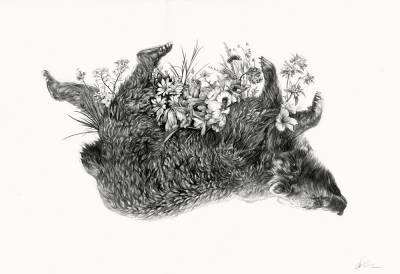
My original graphite drawing for the Mondo/A24 release of Ari Aster’s astonishing midtrip break-up masterpiece, MIDSOMMAR
From tlevert66 (via Instagram)
Thank you for the forum! Do use color and how do you apply it?
I overall think more finally than colorfully. I do use color a lot and mostly for my poster/book cover work but my love tends to land more in the black and white obviously. SO for me I tend to apply and manage color as an after stage once the work is scanned into the computer. It helps me slow walk and stumbled my way through the medium on that level without permanent error blocking my many many wrong turns along the way. I do try and keep the color portion of the work as practical as I can to match the style and tonal qualities and character of the work. Really don’t love cold digital color slapped over a scratchy pencil drawing or a brush underpainting overall and the more natural and married to each other those aspects are, then better. But for me the largest amount of work goes into establishing the piece tonally first, then add the color as an embellishment later. Just because my brains is weird that way. Some artists can work from a standpoint of insane color mindedness that I can only blush and sit gobsmacked by… but it is a talent I do not possess.
From joshlynchdraws (via Instagram)
What informs your decision to select one type of media over another (like brush/ink versus graphite)? Is it based on how the work will be reproduced, the aesthetic quality you want, or other factors all together?
I think I tend to be pretty selfish when it comes to a medium to chose and do so generally because I like working in that medium at that time. I do get called in from time to time to tackle a thing using a medium I’m not presently indulging in, and part of me is always a little petulant about it internally… sort of like a spoiled brat being told to use a fork when he’s shoving beans into his gob via his fingers… but I’ve moved between so many different modes by now it’s expected that I should be asked to bring something forward for a particular project.
Often that’s the leading edge of it, and there are times where a particular approach is demanded by the subject. A samurai thing for Criterion does tend to beg after a sumi ink approach, and a noir piece wants the graphite, and so on… I think being able to dance a few different styles is aidful both professionally and for one’s own growth as an artist generally speaking so making sure you don’t get overly locked into one particular way of working is essential.
From @Gwicki (via twitter)
What tools or materials do you find essential to making your work better? Do you think there’s a relationship between good work and quality materials?
No I think there’s at best a marginal difference made in using fancy material over cheap ones. As I said above if you can’t make a good drawing with a primitive crap tool from Walmart, buying an expensive one to use won’t help you much. You really do need to be able to make of yourself, the best tool you can manage. The rest matters less so. The abstract expressionists. Pollack, Rothcko, Newman, etc… for example, used cheap house paint for their work. Warhol used poster paints for his silkscreens, DaVinci used a piece of burned wood to sketch with. We get caught up in the tools as a source of the value of the work we make but it’s not really a necessary truth. Yes a good piece of paper might take ink in a way a crappy chunk of pasteboard won’t, but again, if you can’t make a good drawing one a napkin, a $300 sheet of handmade cotton rag isn’t going to save you.
My advice generally is to find materials that you feel most comfortable working with. The goal is to forget the relationship between you and the tool so that you both become one and the same. The pen becomes and extension of the hand and the mind. For me and my personal neurosis, a super expensive piece of paper all but guarantees a crappy piece. If I can’t discard it easily from making a mistake, I get seized up and thus guarantee a bad result. SO I tend to chase materials that are not costly… good paper but cheapish paper. Nice brushes but nothing special, Bic pens, #2 pencils, typing paper sometimes… the work is the lead horse and the rest matters less than making sure the effort and task of creating is left to run unfettered by preciousness and the fashionista approach to gathering only the most high end materials.
Okay! I hope this helps answer some of your questions- I wasn’t able to get all of them in here, and really only about 1/4 of what came in. But I promise to do this again, at least once a year here on Muddy Colors and in the meantime keep working, and keep asking away!



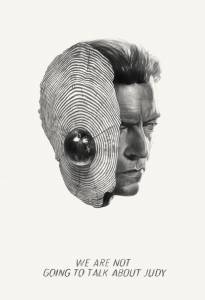
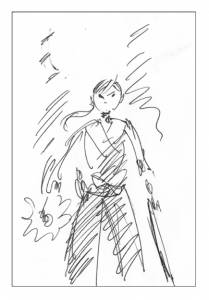

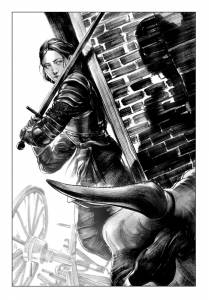


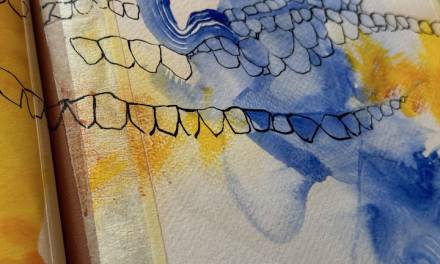
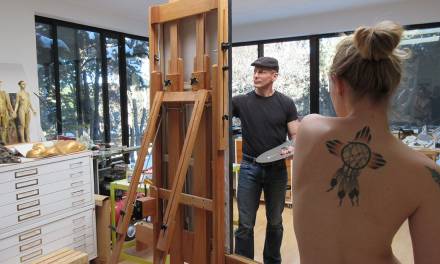
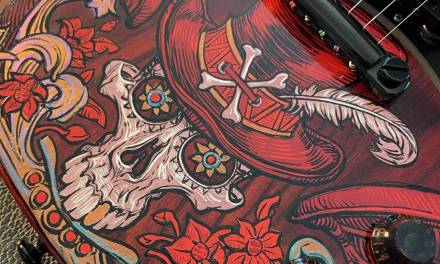

Not sure if your spelling checker is on overdrive, or if semi ink is a real thing. Is this Sumi ink, or something else?
My autocorrect hates sumi ink and I fight it all the time. I apparently did not snipe all the gremlins. Thanks for the heads up.
No worries, you are very welcome; I’m glad I could help out. With some terms, its hard to tell – I don’t know how much I don’t know, so I’m glad I did learn something from it. The ink is hard to find around here, but its on my list of things to try out. Thanks for the recommendation.
대전출장마사지로 쉽고 간편하게 집에서 경험해볼 수 있습니다.